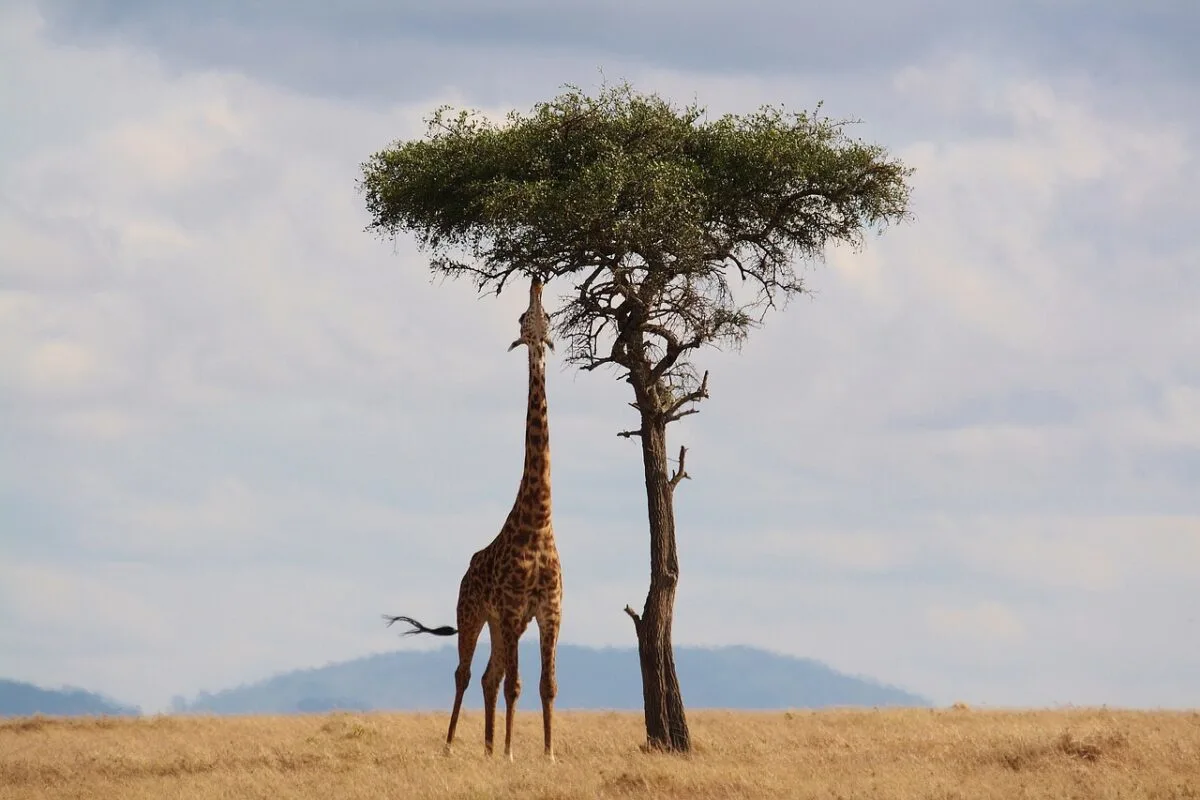Even the smallest giraffe towers over us with their long and graceful necks – let’s meet the tallest giraffes ever recorded!
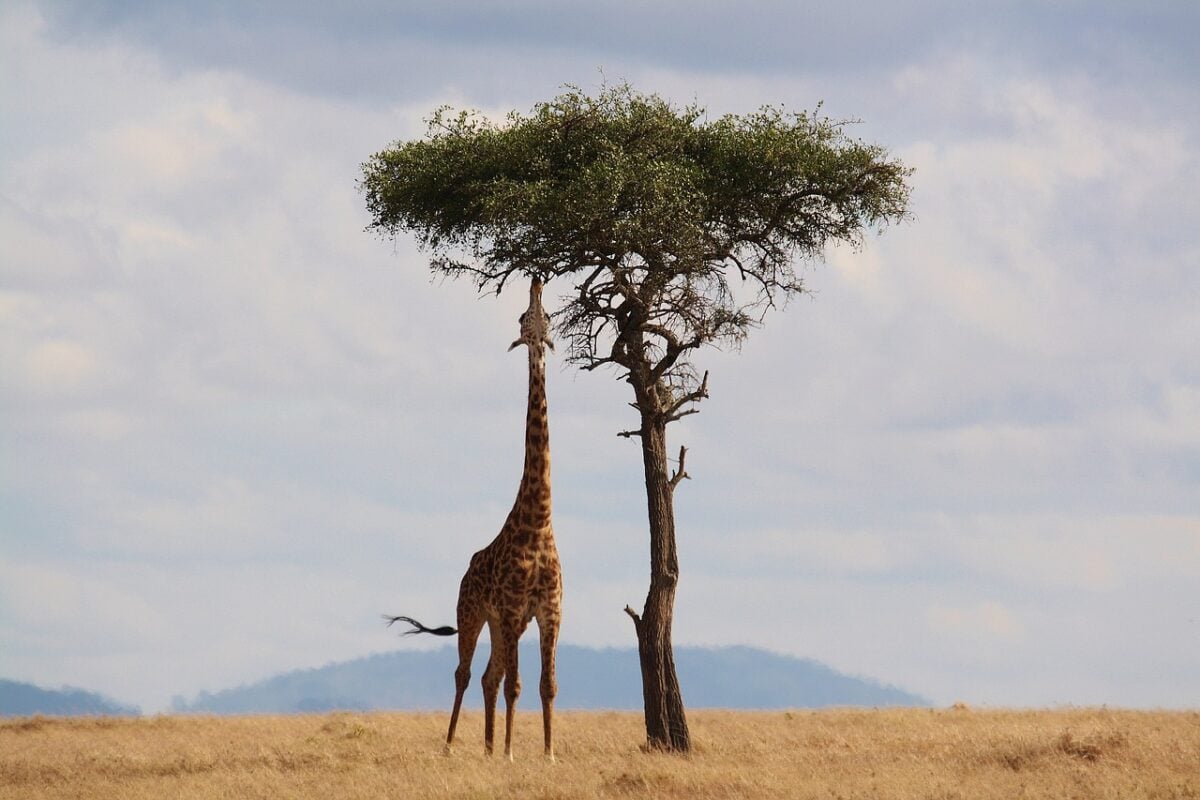
Giraffes are known for their incredible height, distinctive spotted coat, and – above all – their lengthy and graceful neck.
These iconic animals are native to the African continent, where they can roam the grasslands and savannas in small herds. Although their long eyelashes and big eyes make them adorable, it is their towering height that makes them truly unique: giraffes are the tallest animals ever recorded, with an average height of 18 feet (5.5 meters).
Get ready to step into the towering world of giraffes, where height becomes a subject of intrigue for scientists, researchers, and animal enthusiasts alike. Amidst these long-necked wonders, there are individuals who truly reach for the skies.
In this post, we’re about to introduce you to the undisputed titan of giraffes – a record-breaker who’s not just a head above the rest but a neck too! And let’s not forget about our runner-up in this extraordinary competition.
If you’re ready to delve into the realm of these exceptional creatures and uncover some mind-boggling facts and theories about their incredible heights, then you’re in for a treat. So, let’s embark on this journey of giraffe greatness together!
The Two Tallest Giraffes Ever Recorded
#1 George

Meet the tallest giraffe ever recorded: George, a magnificent animal that stood head and shoulders above the rest. According to records, he lived at the Chester Zoo in England in the 1950s. George was a towering presence, measuring a whopping 19 feet (5.8 meters) tall at his full height.
George was known for more than just his impressive height, however. He was a gentle and friendly giraffe with a “cheeky personality” and a fondness for interacting with zoo visitors. His keepers described him as a favorite among visitors, who were often amazed by his size and delighted by his playful antics.
Despite his immense size, George was a healthy and active giraffe, thriving in the zoo environment. He was well-cared for by his keepers, who provided him with a nutritious diet, plenty of space to roam, and many enrichment activities to keep him mentally stimulated. George lived a long and happy life, becoming a beloved figure at the Chester Zoo and was renowned globally.
Today, George’s legacy lives on, inspiring awe and wonder in those who hear about his incredible size and friendly personality. He remains one of the most famous giraffes, proving the beauty and majesty of these amazing animals.
#2 Forest

In the world of towering giraffes, George still reigns supreme, holding the record for the tallest giraffe ever recorded. His lofty status remains unchallenged throughout history. However, there are those who come remarkably close to his towering stature. One such contender was Forest, a male giraffe residing at the Australia Zoo in Queensland, Australia.
In July 2020, Forest burst onto the scene, grabbing headlines as Guinness World Records officially recognized him as the Second Tallest Giraffe Ever Recorded. At the time of his measurement, Forest stood an astounding 18 feet and 8 inches (5.7 meters) tall, falling just a whisker short of George’s record.
Much like George, Forest was celebrated not only for his remarkable height but also for his endearing personality and gentle disposition. He became a cherished figure at the Australia Zoo, sharing his days with fellow giraffes and an array of animal companions. His keepers described him as a social and inquisitive creature, always eager to engage with visitors and explore his surroundings.
Regrettably, Forest left us in 2020, succumbing to a degenerative condition. Nevertheless, his legacy as one of the tallest and most awe-inspiring giraffes in history lives on. His record-breaking height continues to evoke wonder and admiration, serving as a testament to the remarkable diversity and beauty found within the animal kingdom.
Why Are Giraffes So Tall?
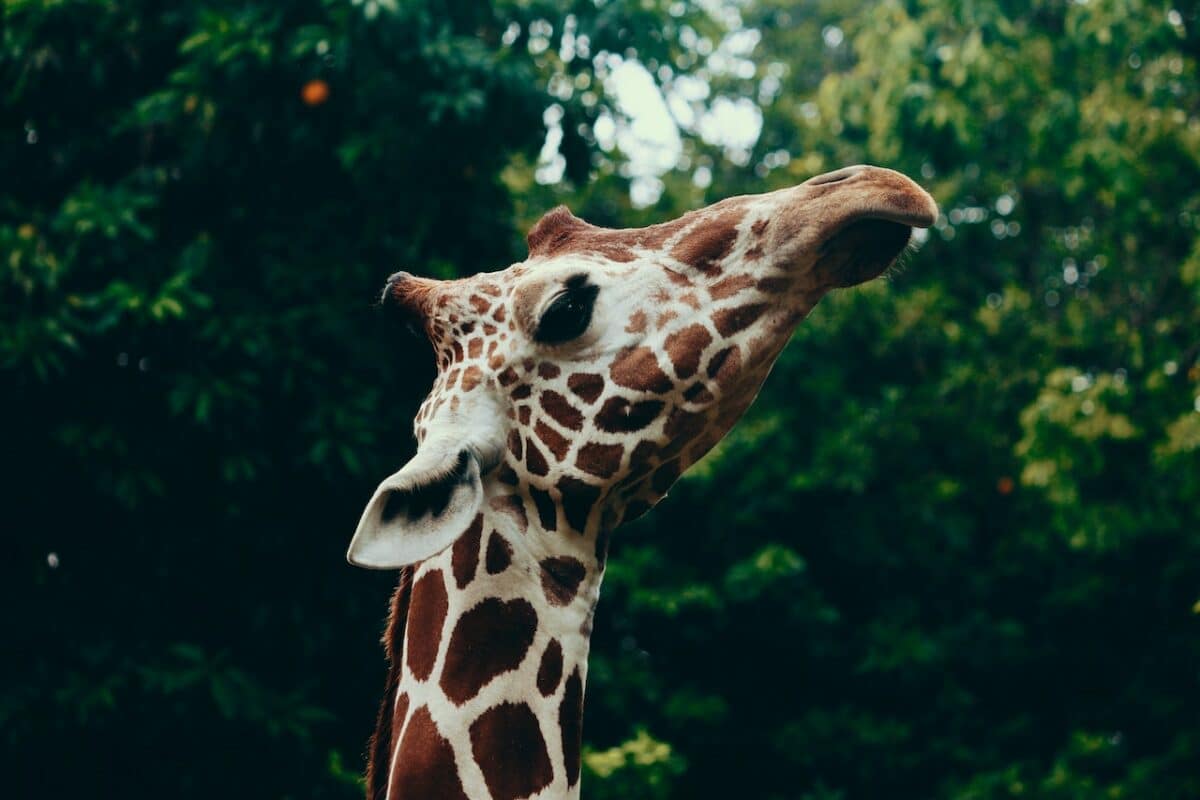
Giraffes are the tallest animals on land, reaching up to 18 feet some cases, as shown both by George and Forest. On average, though, giraffes typically reach a height of around 14 to 18 feet (4.3 to 5.5 meters.) Male giraffes tend to be taller than females, the latter usually reaching a height of around 14 feet (4.3 meters) at most.
But why are they so tall? The answer lies in their unique physiology and evolutionary history.
One reason for their height is related to their diet. Giraffes primarily feed on leaves from trees and shrubs, and their height allows them to access the uppermost leaves that other animals cannot reach. Their long necks provide them with a vertical reach of up to 20 feet (6 meters), enabling them to feed on a wider variety of plant species and survive in areas with low foliage density.
Another factor is the giraffe’s skeletal structure. Their bones are elongated but not thicker than those of other mammals their size, making them relatively lightweight despite their height. Their long legs are well-suited for supporting their massive bodies and allowing them to move quickly and gracefully across the savannah despite their towering height.
Giraffes’ unique physical adaptations have also been shaped by evolution. Their ancestors likely lived in dense forests, where a long neck allowed them to reach higher foliage while staying hidden from predators. Over time, as their habitats changed and their predators evolved, giraffes adapted to their new environments by developing even longer necks and legs.
So while giraffes may seem like strange and otherworldly creatures, their impressive height and unique physical adaptations result from millions of years of evolution and adaptation to their environment. They serve as a fascinating specimen of evolution for survival in terms of habitat.
Interesting Giraffe Facts
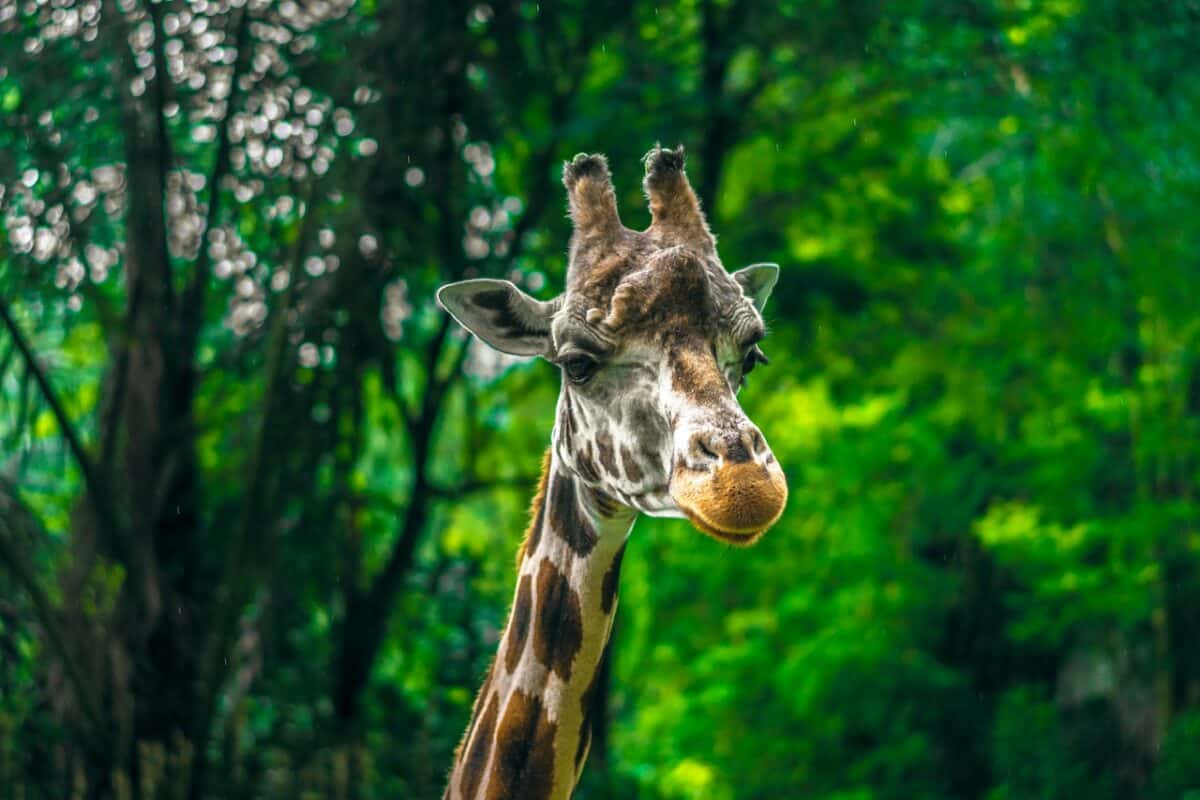
Giraffes, the majestic giants of the savannah, possess a slew of captivating traits that set them apart as a truly remarkable species.
First off, their neck vertebrae may not be numerous, but they make each one count. Remarkably, giraffes share the same number of neck vertebrae as most other mammals, including humans. The distinction lies in their remarkable length, with each vertebra stretching over 10 inches (25 cm), creating those iconic long necks that reach for the treetops.
Giraffes are sociable beings, gathering in groups known as ‘towers.’ These gatherings can range from a few individuals to over 20, creating quite a spectacle on the African plains.
To snack on high-hanging leaves, giraffes rely on their incredibly long tongues, which can extend up to a whopping 18 inches (45 cm). This adaptation allows them to access nourishment in the tallest of trees.
Adding to their uniqueness, giraffes sport coat patterns as individual as human fingerprints. This distinctive feature makes each giraffe easily distinguishable, an animal kingdom version of personalized markings.
Don’t be fooled by their towering grace – giraffes are speed demons, capable of sprinting up to 35 miles (56 km) per hour. They’re among the fastest land animals, proving that size doesn’t hinder their agility.
When it’s time to catch some Zs, giraffes opt for an unconventional approach. Despite their height and long legs, they snooze standing up, requiring a mere 30 minutes of shut-eye per day. This adaptation ensures they remain vigilant and ready to face the challenges of their wild habitat.
For more fun facts and scientific information, check out Britannica’s page on giraffes.
Key Points
| The tallest giraffe ever recorded was 19 feet tall. |
| On average, giraffes grow between 14 – 18 feet tall. |
| The second tallest giraffe was 18 feet 8 inches tall. |
| Giraffe height is measured from the top of the horns. |
| Giraffes have evolved to grow tall to reach foliage in tall trees and gain a competitive advantage in obtaining food. |
The Bottom Line
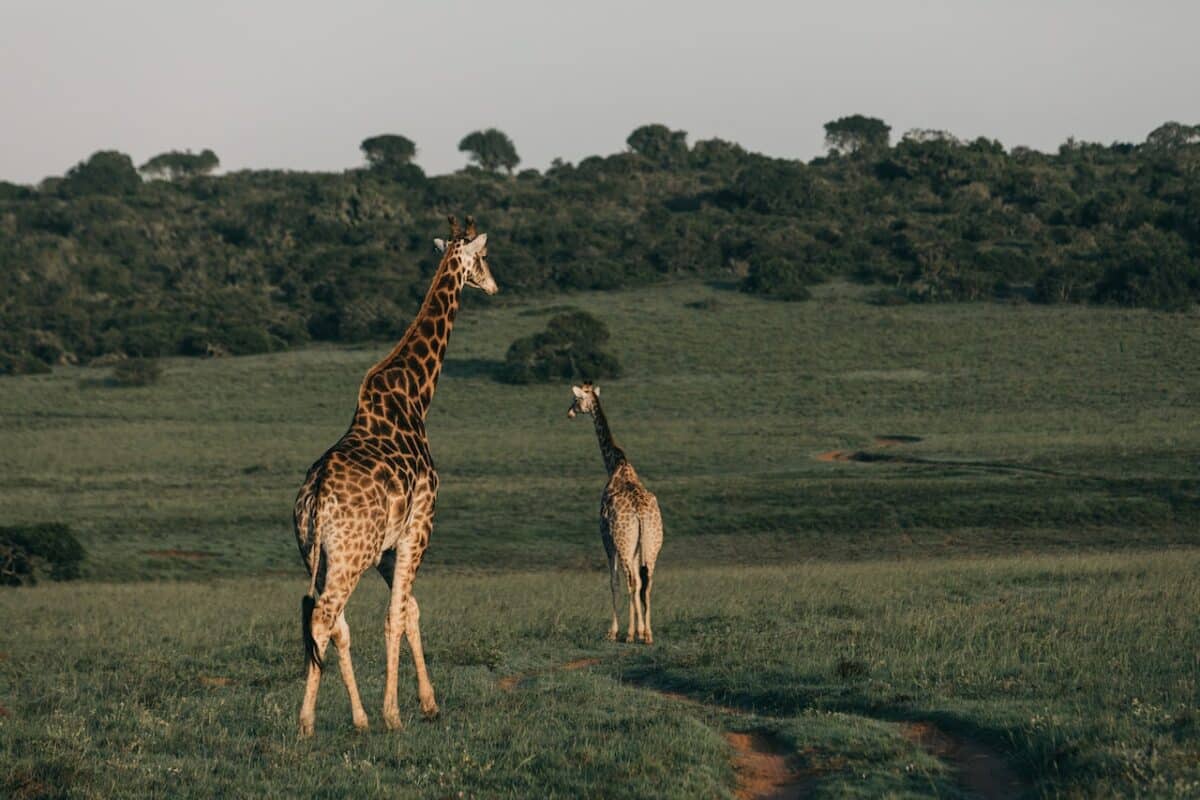
Giraffes are truly remarkable animals, known for their incredible height and unique physical features. George, the tallest giraffe ever recorded, stood at a whopping 19 feet (5.88 meters) tall and had a cheeky personality that endeared him to many.
However, George was not the only impressive giraffe out there. The current title for the world’s second tallest giraffe belongs to a male named Forest, who stood at a remarkable 18 feet 8 inches (5.8 meters) tall.
Giraffes’ incredible height allows them to reach high up into trees for food and also helps them keep a lookout for potential predators. Despite their height, they are graceful and agile animals capable of running at impressive speeds.
As we’ve seen, giraffes also have many other interesting characteristics that make them a unique and fascinating species. From their social behavior to their distinctive coat patterns, there is always more to learn about these incredible creatures.
Thank you for reading this article on the tallest giraffe ever recorded! Continue your exploration of the animal kingdom’s incredible capabilities and adaptations by reading about animals that are impressive for the opposite reason; not because they’re tall but because they’re so small. Or, on a completely different note, have you ever wondered why goats sound the way they do?
- Magpie Bird Is Reunited with Her Dog Best Friend - April 24, 2024
- Dog Saves Another Dog From Drowning in Fish Pond - April 23, 2024
- Man On Motorbike Rescues Cat From Highway - April 23, 2024

